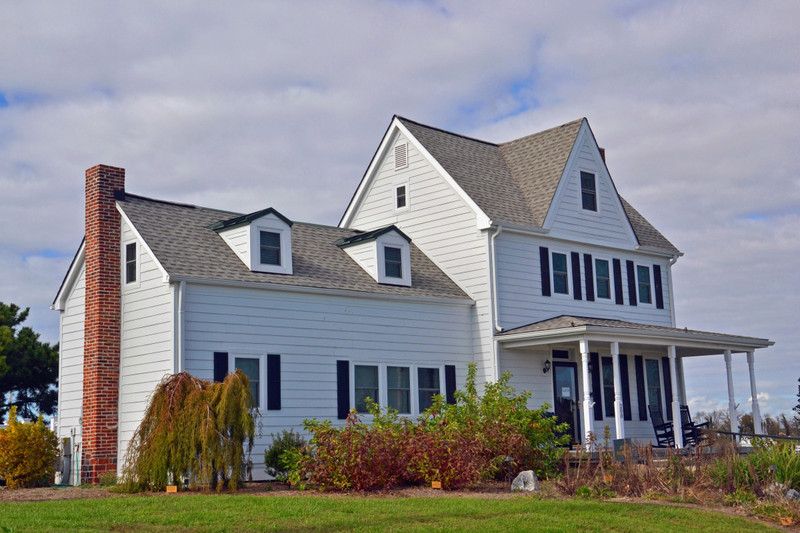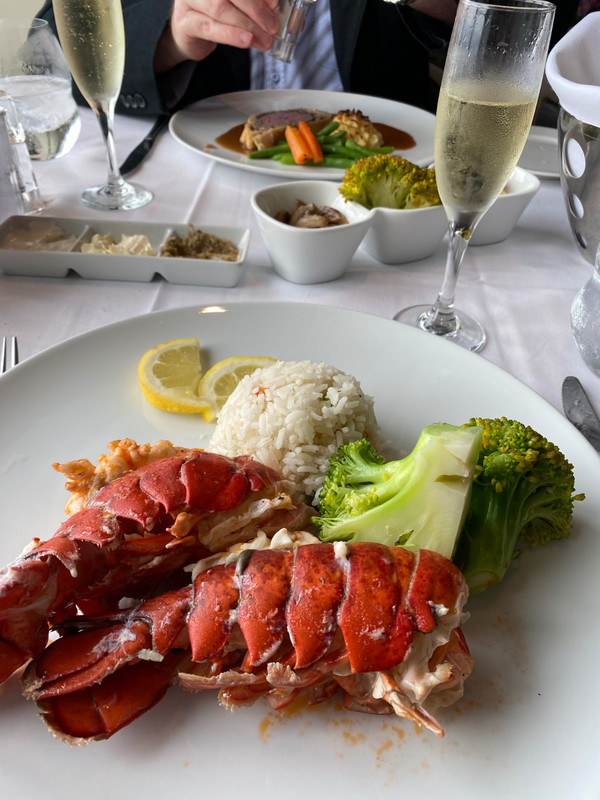Susan and I thought Solomons, Maryland, would be a pleasant place for another circumscribed day trip. I had head of it, but not visited. Certainly easy to reach from home, only about 1 1/2 hours away via the Capital Beltway and Maryland 4. Solomons is at the tip of a peninsula where the Patuxent River flows into the Chesapeake Bay. Fishing, especially crabbing, had been the industry in Solomons for decades. Shipbuilders at Solomons developed the bugeye and skipjack sailing vessels specifically for fishing and crabbing. Today pleasure boating and sailing are the principal leisure activities. There is no beach immediately at Solomons but there are several marinas.
At Solomons, Maryland 4 continues across the Patuxent River via the Thomas Johnson bridge. We took the branching Solomons Island Road into the town and and then on to its end. The road terminates at a roundabout at the Chesapeake Biological Laboratory campus, a unit of the University of Maryland. This is Solomons island proper, though it no longer an island. The nearby Isaac Solomon House faces the south towards the Chesapeake Bay. It is the oldest structure in Solomons, albeit much modified over the years. Part of it dates to 1744
when the area was known as Somervells Island. It was occupied by Isaac Solomon, a Delaware businessman who established the largest oyster cannery on the Bay after the Civil War. Solomons Island is named after him. The house is now used as the Chesapeake Biological Laboratory Visitors Center. The campus has put many older residences to use as office and laboratory space. A large weather buoy is on display in a park to demonstrate a part of the laboratorys mission. A parking area provides scenic views as the Patuxent River meets the Chesapeake Bay.
In town, the J.C. Lore Oyster House is a preserved crab, oyster and seafood processing plant. It was in operation until 1978 and is now a unit of the Calvert Marine Museum. The wooden seafood cannery is listed on the National Register. Across from it is a boardwalk along the Patuxent River. This time of year appeared to be so there were not many people besides us out for a stroll along the riverfront. Solomons is across the river from Patuxent Naval Air station. There is a lot of traffic overhead from it, consisting of fighter jets, helicopters and aircraft making landing approaches.
We ordered a seafood lunch at Captain Smiths Seafood Market. I chose a fish basket with French fries and was presented with no less than six options for the type of fish from which to choose! I decided on catfish. We drove back to the bay overlook area and enjoyed lunch al fresco at a picnic table.
Lastly, Susan and I stopped by the Calvert marine Museum to see the Drum Point Lighthouse. The lighthouse was built at nearby Drum Point in 1883. The design is known as a screwpile, with the lightkeepers cottage in the round base. It isnt a tall tower typeof lighthouse, but was typical of lighthouses along the Chesapeake Bay. There were once of them but only three remain. The lighthouse was restored and moved to the Calvert Marine Museum campus in 1975. The museum was open, but we decided to save visiting it for another time.
On the way out of Solomons we stopped at nearby Lusby to see Middleham Chapel. Middleham Chapel was built in 1748 to replace an earlier wooden structure believed to have been erected as early as 1684. The brick Episcopal church is similar in design to
contemporary colonial church in Virginia. It is on the National Register and is the oldest church building in Calvert County, Maryland.









